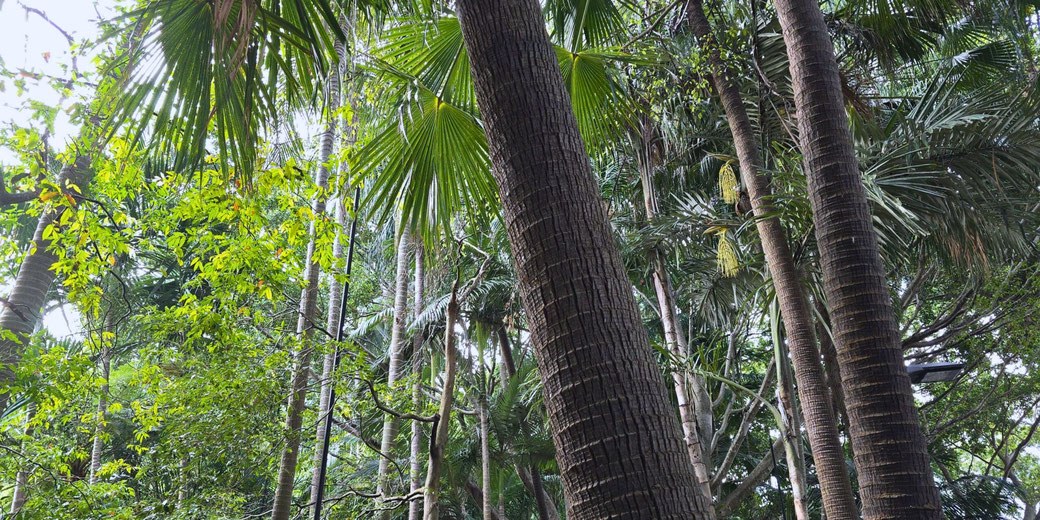Sahul: The ancient super-continent that once connected Australia with the world

During the last Ice Age, sea levels were much lower, and an ancient landmass once connected Australia, New Guinea, and Tasmania.
It was called Sahul. For thousands of years, it was an active environment with plenty of plant and animal life and eventually, even humans lived there.
Such newcomers had to quickly adjust to a challenging environment and deal with massive animals.
What was Sahul like?
About 140 million years ago, the area of Sahul began breaking away from the supercontinent Gondwana.
As tectonic plates moved, they created a landmass that became clearly separated from the rest of the world.
Then, during the Pleistocene epoch, which lasted from around 2.5 million years ago to about 11,700 years ago, lower sea levels revealed the full size of the Sahul landmass.
The areas of present-day Australia, New Guinea, and Tasmania were all joined by this landmass.
Lower sea levels allowed movement and contact between different species across the whole area.

As far as researchers can tell, Sahul's geography was quite varied. It may have included dry deserts, thick rainforests, and wide grasslands because each of these areas would have supported different ecosystems and many species.
The climate of Sahul changed over time due to its size.
During the Pleistocene epoch, ice ages caused big changes in temperature and sea levels.
Fluctuating temperatures changed habitats and forced species to change quickly.
Because of this, Sahul was home to incredible megafauna. Huge marsupials like Diprotodon lived there. It was the biggest known marsupial and was about the size of a modern rhinoceros.
The powerful marsupial lion, Thylacoleo, was also one of the top predators in these areas.
They were all gone by around 46,000 years ago, most likely because of climate change and the arrival of humans.

The arrival of humans
The first humans who reached Sahul probably came from Southeast Asia, most likely from the Wallacean islands, which are in modern-day Indonesia around 65,000 years ago.
They could have crossed a series of land bridges that lower sea levels uncovered.
During the Pleistocene Ice Age, sea levels were up to 120 metres (394 feet) lower than today.
The Indigenous peoples of Australia are believed to be the descendants of these first migrants.
Over the next tens of thousands of years, the different people groups built new communities that had their own social systems.
The archaeological period shows when we first find evidence of human life and they created rock art, which showed stories and symbols that were important to their communities.
Rock art found in places like Arnhem Land and the Kimberley is a rare record of these peoples over time.
In fact, Arnhem Land has some of the oldest and largest collections of rock art in the world, with pieces that are over 40,000 years old.
They show extinct megafauna, hunting scenes, and spiritual symbols.

Dramatic ecological and environmental changes
As the last Ice Age ended around 12,000 years ago, temperatures rose, and ice sheets melted.
Sea levels rose and covered the land bridges that had linked the different lands.
As a result, Tasmania was cut off from mainland Australia about 10,000 years ago and New Guinea became separate about 8,000 years ago.
As sea levels kept rising, interaction between these groups became harder due to natural barriers.
Now separated, each land area went through different environmental changes. In Australia, the land became drier, turning once-green areas into deserts.
The change forced many species to adjust or disappear while New Guinea's rainforests stayed healthy, supporting many different kinds of life.
In contrast, Tasmania's cooler weather helped keep different plant and animal species alive, unlike those on the mainland.
Human activity also had an effect on these environmental changes.
For example, Indigenous Australians used fire to hunt and manage the land.
The land management method known as fire-stick farming changed the plant life in the area.
It also helped fire-resistant plants, like eucalypts, grow and created open areas that were good for hunting.
The Tasmanian people adjusted to live in small, moving communities.
They had to manage the colder weather and used the sea for food, including seals and shellfish.
The most famous archaeological discoveries
Scientific research on Sahul has provided insight into the early history of Australia's First Nations peoples.
These remains, dating back about 42,000 years, were part of one of the oldest human settlements outside Africa.
They also gave rare information about the burial customs and daily life of these early people.
In New Guinea, research has looked at early farming and in particular, the Kuk Swamp site, an early agricultural site, showed signs of early farming going back 7,000 years.
Scientists found remains of old drainage systems and taro and banana plants that had been cultivated. This showed advanced farming methods.
In Tasmania, a 1980s study of the Kutikina Cave showed people lived there about 20,000 years ago because it had tools and bones that demonstrated how early people lived in cold places during the Ice Age.
Researchers also found that their diet included both sea and land food.
What do you need help with?
Download ready-to-use digital learning resources
Copyright © History Skills 2014-2025.
Contact via email
With the exception of links to external sites, some historical sources and extracts from specific publications, all content on this website is copyrighted by History Skills. This content may not be copied, republished or redistributed without written permission from the website creator. Please use the Contact page to obtain relevant permission.





